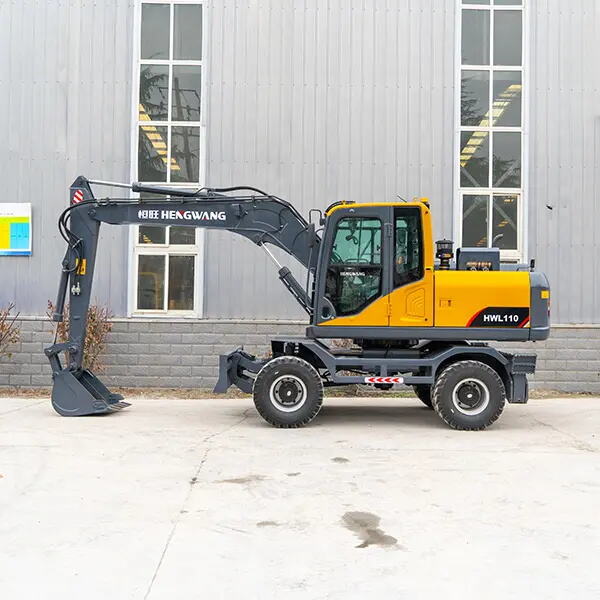The construction industry continues to evolve, and wheeled excavators have become indispensable assets on modern job sites. These versatile machines combine mobility with powerful digging capabilities, offering contractors unprecedented flexibility and efficiency. Understanding how to maximize their potential can significantly impact project timelines and profitability.
Today's wheeled excavators represent a perfect blend of engineering innovation and practical functionality. Their ability to navigate various terrains while maintaining stability during operations makes them ideal for both urban development and infrastructure projects. By mastering the proper techniques and implementation strategies, operators and site managers can achieve optimal performance levels that directly contribute to project success.
Proper positioning of a wheeled excavator is fundamental to achieving maximum efficiency. Operators should always assess the working area before beginning operations, ensuring the machine is placed on stable, level ground. The outriggers should be fully extended and firmly planted when performing heavy digging operations, providing the necessary stability for precise movements.
Strategic placement also involves considering the machine's reach and swing radius. Experienced operators position their wheeled excavator to minimize repositioning requirements, allowing them to complete more work from a single location. This approach not only saves time but also reduces fuel consumption and wear on the machine's components.
The hydraulic system is the heart of any wheeled excavator, and proper management is crucial for optimal performance. Operators should maintain appropriate operating temperatures and regularly check hydraulic fluid levels. Working the machine within its designed pressure ranges ensures smooth operation and prevents unnecessary strain on components.
Modern wheeled excavators come equipped with advanced hydraulic systems that offer multiple working modes. Selecting the appropriate mode for specific tasks - whether it's precision digging or high-production operations - helps optimize both power output and fuel efficiency. Regular maintenance of the hydraulic system, including filter changes and leak inspections, is essential for sustained performance.

Mastering efficient digging techniques is crucial for maximizing wheeled excavator productivity. Operators should maintain a consistent rhythm while avoiding overloading the bucket, which can lead to spillage and increased cycle times. The ideal digging angle typically ranges between 30 and 45 degrees, allowing for optimal bucket fill while minimizing resistance.
Planning the digging sequence is equally important. Experienced operators work in organized patterns, moving systematically across the work area. This approach reduces unnecessary movement and ensures complete coverage of the designated area. Additionally, matching the bucket size to the material being handled optimizes load capacity and prevents machine strain.
Material handling efficiency greatly impacts overall productivity. Operators should establish clear zones for material placement, considering factors such as transport vehicle positioning and material segregation requirements. The wheeled excavator's mobility advantage allows for optimal positioning relative to both the digging area and material placement zones.
Implementing a well-planned spoil management strategy helps maintain site organization and prevents double handling of materials. Operators should consider factors such as material type, site logistics, and future processing requirements when determining placement locations. This forward-thinking approach minimizes the need for additional material movement and reduces overall project costs.
Regular maintenance is crucial for maintaining wheeled excavator efficiency. Following manufacturer-recommended service intervals helps prevent unexpected downtime and ensures optimal performance. Daily inspections should include checking fluid levels, tire condition, and key wear points.
Implementing a comprehensive maintenance tracking system helps managers anticipate service needs and schedule maintenance during low-impact periods. This proactive approach extends equipment life and maintains peak operating efficiency. Special attention should be given to high-wear components such as bucket teeth, pins, and bushings.
Modern wheeled excavators often come equipped with telematics systems that provide valuable performance data. Monitoring metrics such as fuel consumption, idle time, and productivity rates helps identify areas for improvement. This data-driven approach enables operators and managers to make informed decisions about machine utilization and operation strategies.
Regular analysis of performance data helps establish benchmarks and identify trends that may indicate potential issues before they become serious problems. This information can also be used to develop operator training programs and optimize work procedures for maximum efficiency.
Wheeled excavators offer superior mobility and travel speed on paved surfaces, reduced ground damage, and lower operating costs in appropriate conditions. They excel in urban environments and can move between job sites without requiring transport equipment.
Regular maintenance, proper operation within specified parameters, careful attention to hydraulic system health, and prompt addressing of minor issues before they escalate are key to extending service life. Additionally, proper warm-up procedures and avoiding overloading help preserve component longevity.
Key considerations include material density, desired production rates, machine capacity, and specific job requirements. The bucket should be sized to achieve optimal fill factors without overloading the machine or compromising stability during operation.
 Hot News
Hot News2024-10-31
2024-10-28
2024-10-25
2024-10-23
2024-10-21
2024-09-03